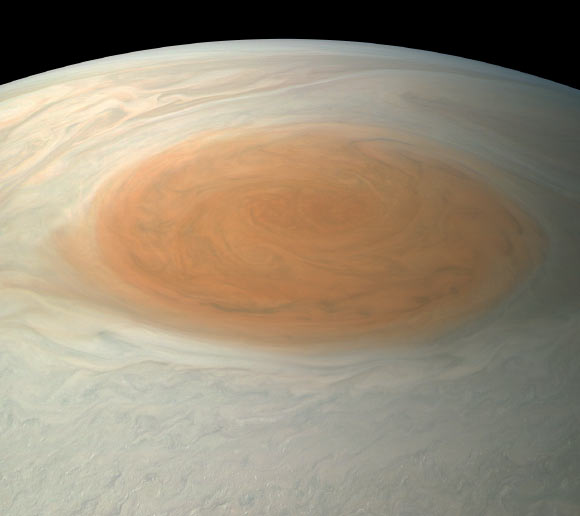NASA’s Juno spacecraft took this stunning photo of Jupiter’s most distinctive feature, its Great Red Spot, from orbit.

This true color image of Jupiter’s Great Red Spot was taken by the JunoCam imager onboard NASA’s Juno spacecraft on July 10, 2017. Image credit: NASA / JPL-Caltech / SwRI / MSSS / Björn Jónsson.
The Great Red Spot is a spinning, cyclone-like storm just south of Jupiter’s equator.
Measuring in at 10,159 miles (16,350 km) in width, the storm is 1.3 times as wide as Earth.
The Great Red Spot has been monitored since 1830 and has possibly existed for more than 350 years.
In modern times, the storm has appeared to be shrinking.
Its reddish color is likely a product of chemicals being broken apart by solar UV light in the gas giant’s upper atmosphere.
The new image offers a natural color rendition of what the Great Red Spot and surrounding areas would look like to human eyes from Juno’s position.
The tumultuous atmospheric zones in and around the Great Red Spot are clearly visible.
The image was taken on July 10, 2017, as the Juno robotic orbiter performed its seventh close flyby of Jupiter.
At the time the image was taken, the spacecraft was about 8,648 miles (13,917 km) from the tops of the clouds of the gas giant at a latitude of minus 32.6 degrees.
Juno’s next close flyby of Jupiter will occur on September 1, 2017.







